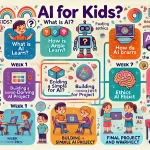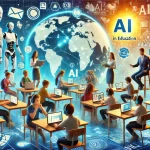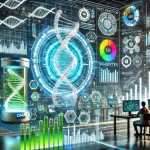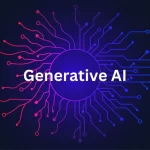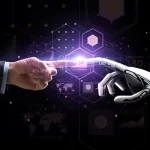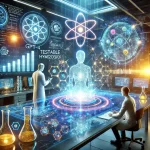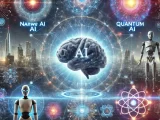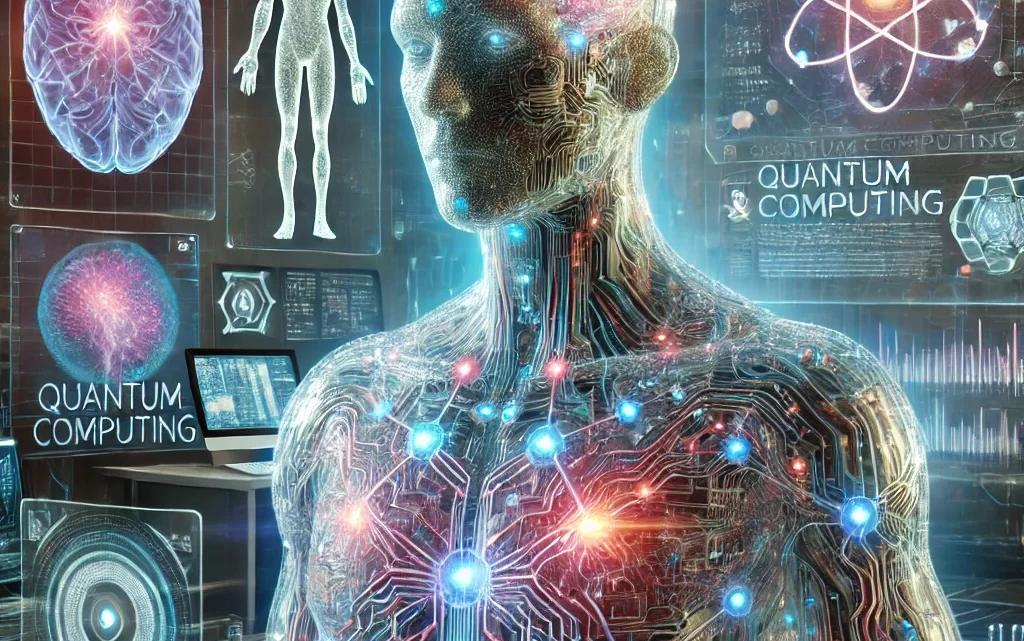
Superintelligence and Agentic AI: Revolutionizing Society and Reshaping the Future
July 9, 2025The rapid evolution of artificial intelligence (AI) has ushered in a new era of technological innovation, with superintelligence and agentic AI at the forefront of current discussions. These concepts represent a leap beyond traditional AI, which has largely focused on tasks like data analysis or content generation. Superintelligence refers to AI systems that surpass human intelligence across a wide range of domains, while agentic AI describes systems capable of autonomously performing complex, real-world tasks with minimal human intervention. Recent discussions on platforms like X, coupled with insights from industry leaders, highlight the transformative potential of these technologies across general applications, scientific advancements, and their profound societal implications, including concerns about job displacement. This essay explores the latest developments in superintelligence and agentic AI, their applications in various fields, and the challenges they pose, drawing on recent findings as of July 2025.
Understanding Superintelligence and Agentic AI
Superintelligence is a hypothetical future state where AI systems achieve cognitive abilities that exceed those of humans in virtually every intellectual task, from problem-solving to creativity. While we are not yet at this stage, recent advancements suggest we are on the cusp of significant breakthroughs. For instance, Meta’s launch of the Superintelligence Labs (MSL) in July 2025, led by former Scale AI executive Alexandr Wang, underscores the industry’s ambition to develop AI that outperforms humans in complex tasks. Posts on X have highlighted this initiative, noting Meta’s aggressive recruitment of top AI researchers to accelerate progress toward superintelligence.
Agentic AI, a stepping stone toward superintelligence, refers to AI systems that can independently execute tasks in real-world environments. Unlike traditional AI, which might generate text or analyze data, agentic AI can take actions such as scheduling meetings, managing logistics, or even conducting scientific experiments. A post on X emphasized the excitement around agentic AI’s ability to move beyond content generation to practical applications, boosting productivity by automating repetitive tasks. This shift is already evident in industries like healthcare, where agentic AI has demonstrated a four-fold increase in diagnostic accuracy compared to experienced physicians in complex cases, while reducing costs by 20%.
Applications Across General and Scientific Domains
General Applications
Agentic AI is transforming industries by automating tasks that previously required human oversight. In business, companies like Shopify are leveraging AI to streamline operations, with CEO Tobi Lütke requiring managers to prove a task cannot be done by AI before hiring new staff. This reflects a broader trend where businesses are integrating AI to handle administrative tasks like data entry, customer service, and even HR functions such as resume screening and performance evaluations. For example, IBM has replaced hundreds of HR roles with AI agents, while Microsoft’s GitHub Copilot now serves as a full AI agent for code generation, reducing the need for junior software developers.
In everyday life, agentic AI is enhancing convenience and efficiency. AI-powered chatbots are replacing customer service representatives, handling routine inquiries with voice and video capabilities. In retail, 31% of Swedish consumers reported using AI as a shopping advisor, indicating its growing role in consumer decision-making. These applications demonstrate agentic AI’s ability to perform tasks that require decision-making and interaction, paving the way for more sophisticated systems that could approach superintelligent capabilities.
Scientific Advancements
In the scientific realm, agentic AI and the pursuit of superintelligence are driving breakthroughs by processing vast datasets and accelerating research. A notable example is the reconstruction of a lost Babylonian hymn using AI to analyze and assemble cuneiform fragments, offering new insights into ancient Mesopotamian culture. This project, led by Professor Enrique Jiménez, showcases AI’s ability to handle complex, interdisciplinary tasks that combine linguistics, history, and data science.
In healthcare, agentic AI is revolutionizing diagnostics and research. The Centaur model, fine-tuned on Meta’s Llama 3.1, predicts human behavior in cognitive tasks with high accuracy, outperforming other models in psychological research. Similarly, China’s ‘Tianshu’ neural disease AI model, showcased at the 2025 Global Digital Economy Conference, is advancing neurological research by identifying patterns in brain data that humans might miss. These advancements highlight how agentic AI can augment scientific discovery, while superintelligence could potentially solve intractable problems, such as curing complex diseases or modeling climate systems with unprecedented precision.
In bioinformatics, generative AI models like CAPTAIN and diffusion-based models are enabling researchers to design synthetic life, program genomes, and develop gene therapies. These models analyze multi-channel biological data, such as single-cell RNA and protein interactions, to create novel biological structures. Such innovations could lead to breakthroughs in personalized medicine and synthetic biology, transforming how we address genetic disorders and environmental challenges.
Broader Implications
The potential of superintelligence extends beyond specific applications to fundamentally reshape how we approach problem-solving. For instance, Ben Goertzel, CEO of SingularityNET, predicts that human-level artificial general intelligence (AGI) could emerge by 2029, with superintelligence following shortly after. This could lead to AI systems capable of inventing new technologies, optimizing global supply chains, or even automating political decision-making, though Goertzel notes that political norms currently limit such applications. In education, AI is already disrupting classrooms, with generative AI fueling a surge in academic cheating, prompting debates about how to integrate it responsibly.
Societal Impacts and Workforce Concerns
While the potential of superintelligence and agentic AI is immense, their societal implications, particularly job displacement, are sparking heated debates. Ford CEO Jim Farley’s warning at the 2025 Aspen Ideas Festival that AI could eliminate half of U.S. white-collar jobs has fueled discussions on X and beyond. Farley’s prediction aligns with other industry leaders, such as Amazon’s Andy Jassy, who anticipates a shrinking corporate workforce due to AI-driven efficiencies, and Anthropic’s Dario Amodei, who warns of 10-20% unemployment by 2030, particularly affecting entry-level white-collar roles.
Recent data supports these concerns. A 2025 study by Revelio Labs found a 19% decline in job postings for roles with AI-doable tasks over the past three years, indicating that companies are already reducing hiring for automatable positions. Roles like software engineering, HR, paralegal work, and financial analysis are particularly vulnerable, as AI tools like GitHub Copilot, Harvey, and CoCounsel automate tasks with high accuracy. For example, a 2025 Stanford study noted that AI tools achieve 90% accuracy in legal document analysis, threatening paralegal and legal research roles.
However, not all perspectives are pessimistic. Some experts, like OpenAI’s Sam Altman, argue that AI will create new jobs, citing historical technological revolutions like the internet. Blue-collar trades, such as construction and manufacturing, are seen as less vulnerable, with Farley noting a shortage of 600,000 manufacturing workers and 400,000 auto mechanics in the U.S. This has led to calls for increased investment in vocational training to prepare workers for roles AI cannot easily replace.
The rise of the white-collar gig economy is another consequence, with 36% of U.S. workers (58 million people) identifying as independent workers in 2025, according to McKinsey’s American Opportunity Survey. Roles like fractional consulting and on-demand analytics are growing, as laid-off professionals pivot to gig work. However, this shift raises concerns about job security and benefits, as gig workers often lack the protections of traditional employment.
Ethical and Societal Challenges
The rapid adoption of superintelligence and agentic AI also raises ethical questions. Posts on X have highlighted concerns about AI consciousness and biases in AI-generated content. For instance, incidents of AI spreading misinformation, such as ChatGPT touting conspiracies, underscore the need for robust safety measures. Anthropic’s Dario Amodei has emphasized the importance of third-party safety assessments to mitigate risks, noting that AI misuse by bad actors could emerge as early as 2025 or 2026.
Moreover, the societal impact of job displacement could exacerbate inequality. A 2025 Oxford Economics study found that unemployment among recent college graduates is rising faster than the overall workforce, with a jobless rate of 6% for those aged 22-27, compared to 4% overall. This trend disproportionately affects young professionals in fields like technology, finance, and law, where entry-level roles are vanishing. To address this, Amodei’s Anthropic Economic Advisory Council is pushing for greater transparency about AI’s workforce impacts to inform policymakers and workers.
Balancing Opportunities and Risks
The path to superintelligence and the rise of agentic AI present a dual-edged sword. On one hand, these technologies offer unprecedented opportunities to enhance productivity, advance scientific discovery, and solve complex global challenges. From reconstructing ancient texts to designing gene therapies, AI is already proving its value. On the other hand, the potential for widespread job displacement and ethical challenges demands proactive measures. Governments, businesses, and educators must invest in retraining programs, as McKinsey estimates that 375 million workers globally will need significant retraining by 2030 to remain competitive.
The “essential economy,” as Farley describes it, could serve as a buffer, with demand for skilled trades offering stable career paths. Additionally, fostering skills like critical thinking, digital fluency, and emotional intelligence—areas where AI struggles—will be crucial for workers to adapt. Policymakers must also address the ethical risks, ensuring AI systems are transparent, unbiased, and safe.
Conclusion
Superintelligence and agentic AI are not distant concepts but active forces reshaping our world in 2025. From automating business tasks to accelerating scientific breakthroughs, these technologies are driving progress at an unprecedented pace. However, their societal impacts, particularly on white-collar jobs, cannot be ignored. As Ford’s Jim Farley and other leaders warn, up to half of these roles could vanish, necessitating a rethink of education, training, and economic policies. By embracing the opportunities while addressing the challenges, society can harness the power of superintelligence and agentic AI to create a future that balances innovation with inclusivity.

